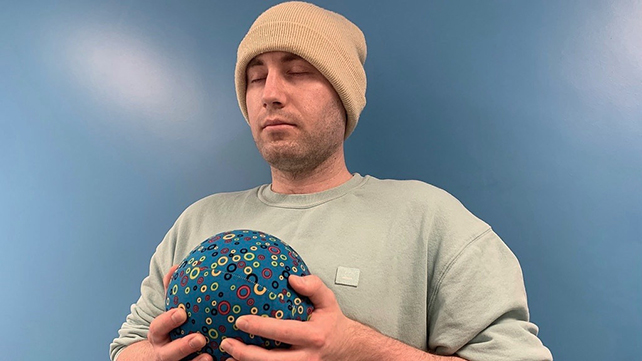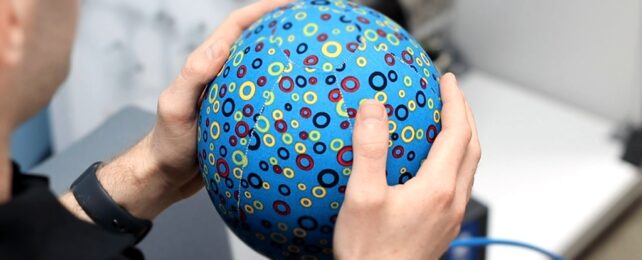A smart relaxation ball designed to help 'personify' breath could help to significantly reduce anxiety, according to a new study.
The shape-shifting ball is called a Physical Artefact for Well-being Support (PAWS), and it's the invention of computer scientist Alexz Farrall, from the University of Bath in the UK.
As users breathe in and out, the ball expands and contracts, providing its handler with a tangible representation of their breathing to help focus their mind and regulate their emotions.
"By giving breath physical form, the ball enhances self-awareness and engagement, fostering positive mental health outcomes," says Farrall.
"It gives a personalized and engaging experience, and is accessible to everyone."

Breathing exercises have long been used to manage anxiety and promote good mental well-being, and they're often used in treatments such as cognitive behavioural therapy (CBT) and dialectical behaviour therapy (DBT).
However, these mindful breathing sessions aren't always as successful as they could be. Participants often find their minds wandering when they should be focusing on breathing – which can lead them back to unwelcome thoughts.
In tests involving 58 volunteers, they reported benefits from being able to 'see' and 'feel' their breathing in physical form when the use of the ball was combined with an audio track from a meditation app.
The team from the University of Bath saw an average 75 percent reduction in anxiety across the participants, with a 56 percent increase in protection against worry-inducing thoughts. In comparison, those who listened to the audio without using the ball experienced an average 31 percent reduction in anxiety, indicating the ball certainly seemed to help.
Another promising finding was that those who used the ball alongside the meditation audio showed significantly higher heart rate variability, a measure that reflects better stress resilience and better emotional regulation.
Right now the PAWS communicates with a chest strap worn by the user, and the setup is rather technical and complicated, as breaths are monitored and reacted to. In the future, if the device can be simplified, it might be able to be used by anyone in the comfort of their own home.
We know depression and anxiety are growing problems, with as many as 3 or 4 people in 10 now reporting high levels of anxiety. With the PAWS system, we might soon have another way to help treat and manage this debilitating mental health issue.
"I want this device to be a genuine catalyst for mental health improvement, not just in clinical settings but also for home users," says Farrall.
The research has not been published in a peer-reviewed paper, but was presented at the CHI Conference on Human Factors in Computing Systems.
